
How to Use Mosfet: Examples, Pinouts, and Specs
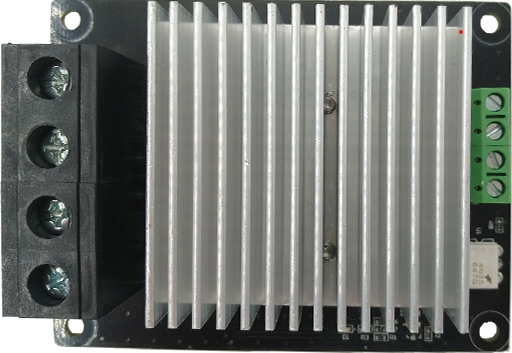
 Design with Mosfet in Cirkit Designer
Design with Mosfet in Cirkit DesignerIntroduction
The MKS 3D-Drucker Mosfet is a high-performance Metal-Oxide-Semiconductor Field-Effect Transistor (MOSFET) designed for efficient switching and amplification of electronic signals. This component is widely used in power electronics, digital circuits, and 3D printer applications due to its high efficiency, fast switching capabilities, and ability to handle high currents.
Explore Projects Built with Mosfet
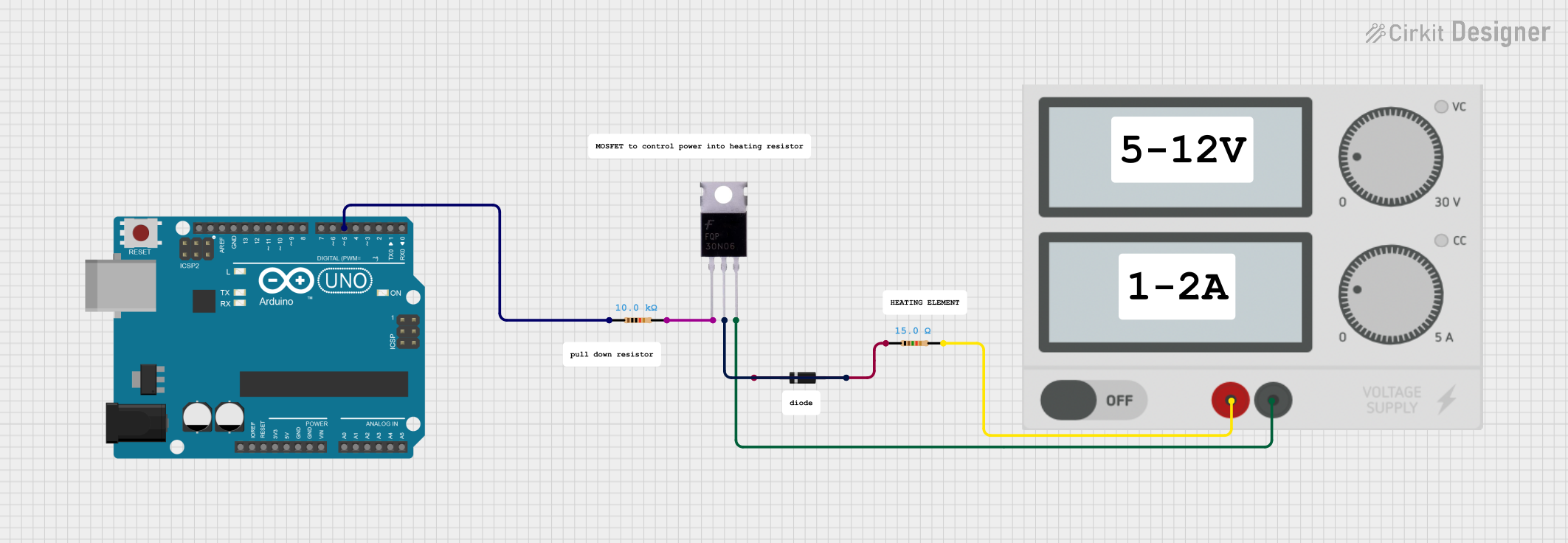
 Open Project in Cirkit Designer
Open Project in Cirkit Designer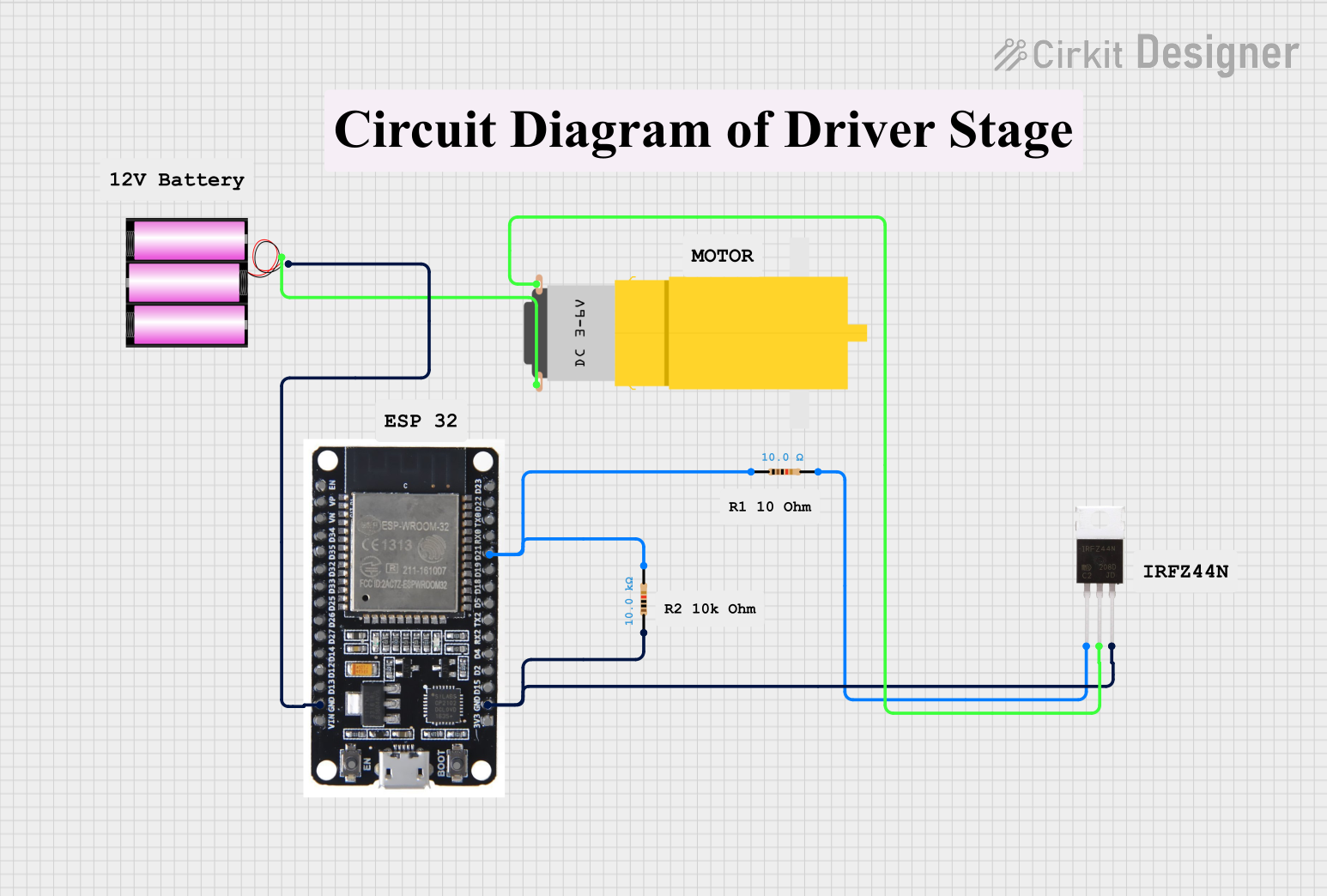
 Open Project in Cirkit Designer
Open Project in Cirkit Designer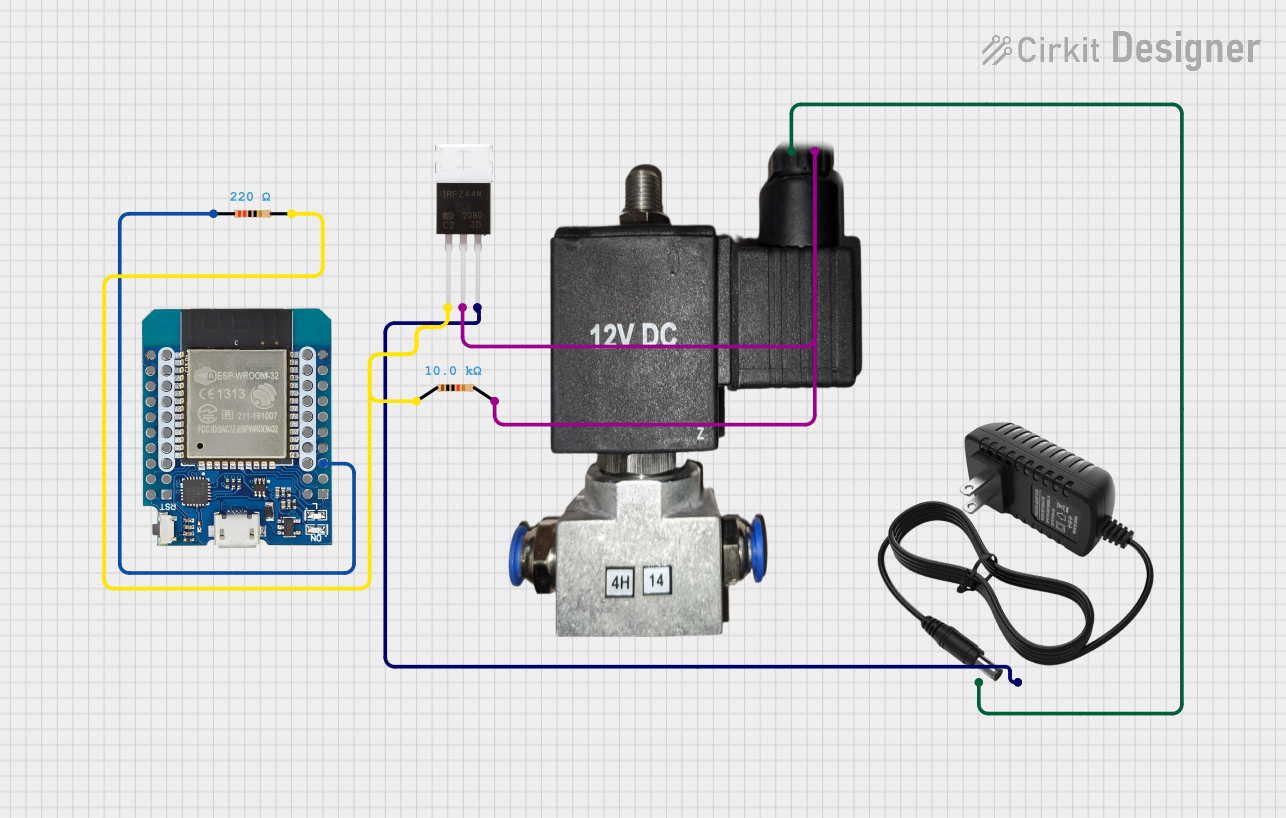
 Open Project in Cirkit Designer
Open Project in Cirkit Designer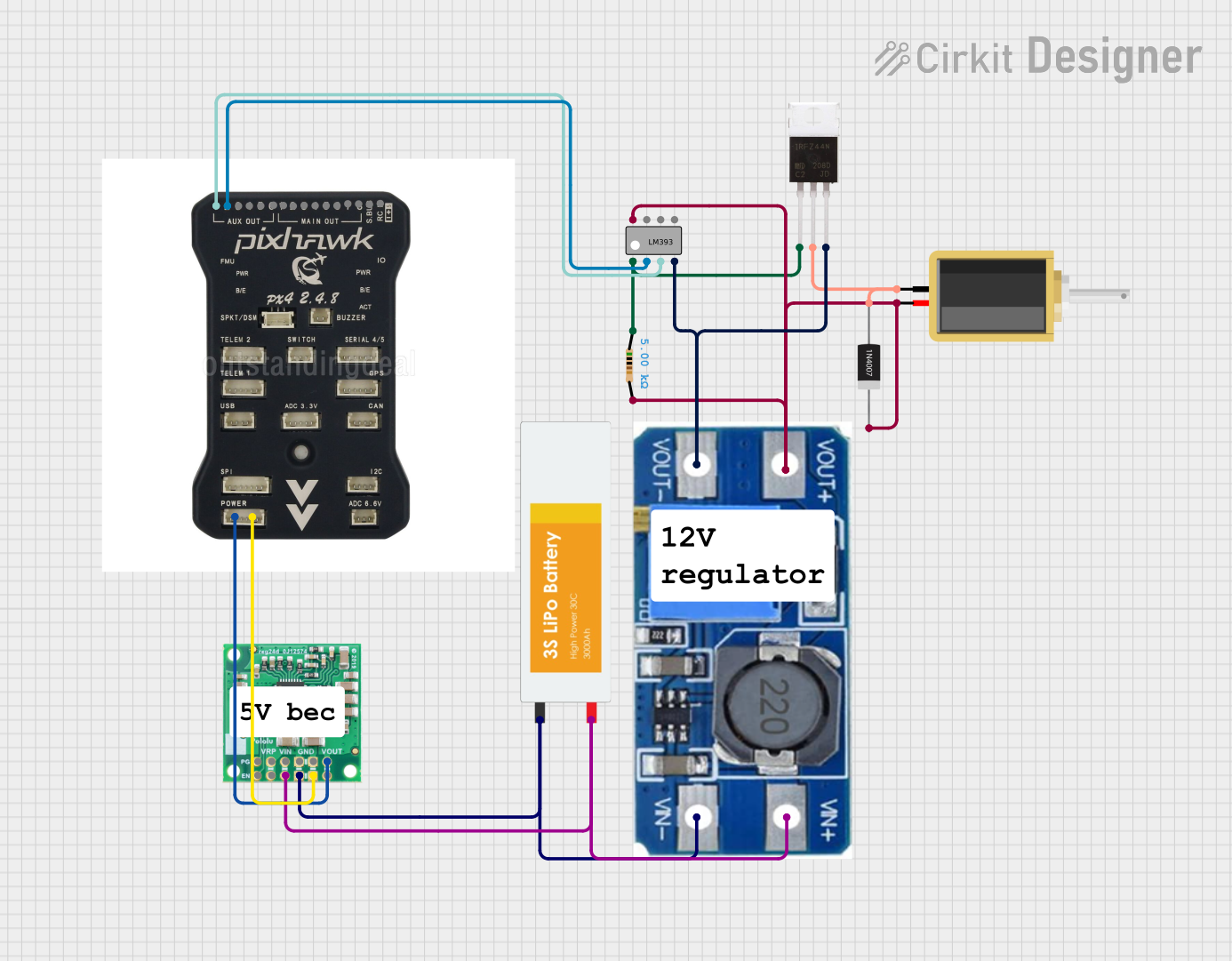
 Open Project in Cirkit Designer
Open Project in Cirkit DesignerExplore Projects Built with Mosfet

 Open Project in Cirkit Designer
Open Project in Cirkit Designer
 Open Project in Cirkit Designer
Open Project in Cirkit Designer
 Open Project in Cirkit Designer
Open Project in Cirkit Designer
 Open Project in Cirkit Designer
Open Project in Cirkit DesignerCommon Applications and Use Cases
- Power control in 3D printers (e.g., heated beds, extruders)
- Motor drivers and speed controllers
- DC-DC converters and power supplies
- High-speed switching in digital circuits
- LED dimming and lighting control
Technical Specifications
The following table outlines the key technical details of the MKS 3D-Drucker Mosfet:
| Parameter | Value |
|---|---|
| Manufacturer | MKS |
| Part ID | 3D-Drucker Mosfet |
| Type | N-Channel MOSFET |
| Maximum Voltage (Vds) | 24V |
| Maximum Current (Id) | 25A |
| Gate Threshold Voltage | 2-4V |
| On-Resistance (Rds(on)) | < 0.01Ω |
| Switching Speed | Fast |
| Operating Temperature | -55°C to +150°C |
| PCB Dimensions | 60mm x 50mm x 20mm |
Pin Configuration and Descriptions
The MKS 3D-Drucker Mosfet module typically has the following pin configuration:
| Pin Name | Description |
|---|---|
| VIN | Input voltage (connect to the power source, e.g., 12V or 24V) |
| VOUT | Output voltage (connect to the load, e.g., heated bed or motor) |
| GND | Ground connection (common ground for the circuit) |
| Signal | Control signal input (connect to the control board, e.g., Arduino or 3D printer) |
Usage Instructions
How to Use the Component in a Circuit
Power Connections:
- Connect the VIN pin to the positive terminal of your power source (e.g., 12V or 24V).
- Connect the GND pin to the ground of your power source and control board.
- Connect the VOUT pin to the positive terminal of your load (e.g., heated bed, motor, or LED strip).
Control Signal:
- Connect the Signal pin to the control signal output of your microcontroller or 3D printer mainboard.
- Ensure the control signal voltage is within the gate threshold voltage range (2-4V).
Load Considerations:
- Verify that the load does not exceed the maximum current rating of 25A.
- Use appropriate heat dissipation methods (e.g., heatsinks or fans) if operating at high currents.
Important Considerations and Best Practices
- Heat Management: The MOSFET can generate heat during operation. Use a heatsink or active cooling to prevent overheating.
- Voltage Matching: Ensure the input voltage (VIN) matches the voltage requirements of your load.
- Signal Voltage: The control signal voltage should be sufficient to fully turn on the MOSFET (above the gate threshold voltage).
- Polarity: Double-check the polarity of all connections to avoid damage to the MOSFET or other components.
Example: Using the MOSFET with an Arduino UNO
Below is an example of how to control a 12V LED strip using the MKS 3D-Drucker Mosfet and an Arduino UNO:
Circuit Diagram
- Connect the VIN pin to a 12V power supply.
- Connect the VOUT pin to the positive terminal of the LED strip.
- Connect the GND pin to the common ground of the Arduino and power supply.
- Connect the Signal pin to a PWM-capable pin on the Arduino (e.g., Pin 9).
Arduino Code
// Example code to control a 12V LED strip using the MKS 3D-Drucker Mosfet
// Connect the Signal pin of the MOSFET to Arduino Pin 9
const int mosfetPin = 9; // Define the MOSFET control pin
void setup() {
pinMode(mosfetPin, OUTPUT); // Set the MOSFET pin as an output
}
void loop() {
analogWrite(mosfetPin, 128); // Set LED brightness to 50% (PWM value: 128)
delay(1000); // Wait for 1 second
analogWrite(mosfetPin, 255); // Set LED brightness to 100% (PWM value: 255)
delay(1000); // Wait for 1 second
}
Troubleshooting and FAQs
Common Issues and Solutions
MOSFET Overheating:
- Cause: High current load or insufficient cooling.
- Solution: Use a heatsink or active cooling (e.g., a fan) to dissipate heat.
Load Not Turning On:
- Cause: Insufficient control signal voltage or incorrect wiring.
- Solution: Verify that the control signal voltage is above the gate threshold voltage (2-4V). Check all connections.
MOSFET Not Switching Properly:
- Cause: Signal pin not connected to a PWM-capable pin or incorrect signal voltage.
- Solution: Ensure the Signal pin is connected to a PWM-capable pin on the microcontroller and the signal voltage is within the required range.
Short Circuit:
- Cause: Incorrect wiring or reversed polarity.
- Solution: Double-check all connections and ensure correct polarity.
FAQs
Q: Can I use this MOSFET with a 24V power supply?
- A: Yes, the MOSFET supports input voltages up to 24V.
Q: Do I need a heatsink for low-current applications?
- A: For low-current applications (e.g., <5A), a heatsink may not be necessary. However, monitor the temperature during operation.
Q: Can I control this MOSFET with a 3.3V microcontroller?
- A: Yes, as long as the control signal voltage is above the gate threshold voltage (2-4V).
Q: Is this MOSFET suitable for AC loads?
- A: No, this MOSFET is designed for DC loads only. For AC loads, use a TRIAC or other suitable component.